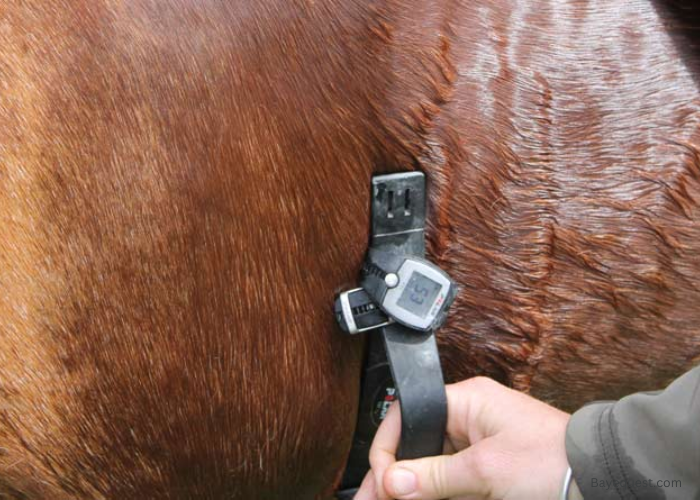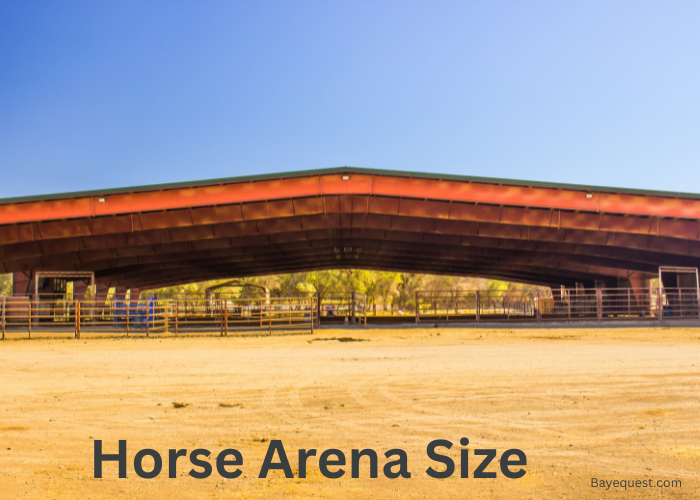A horse’s heart rate can tell you a lot about its health. Whether resting in the pasture or working hard, knowing the average pulse can make a big difference.
But what’s normal? Horses have unique heart rates that vary with age, fitness, and activity level.
Some changes are natural, while others signal something’s wrong. Understanding your horse’s pulse is key to spotting potential issues early.
In this blog, we’ll break down what the average heart rate is and why it matters
What is the Average Heart Rate or Pulse for a Horse? Key Takeaway
The average heart rate for a healthy adult horse at rest is 28 to 44 beats per minute (bpm). During intense exercise, it can rise to 240 bpm. Factors like age, fitness, stress, and health conditions can affect the rate. Monitoring helps detect issues early and maintain heart health.
How Does the Heart of a Horse Work?
The horse’s heart is a powerful and efficient organ. It pumps blood throughout the body, delivering oxygen and nutrients to muscles and organs.
Located in the chest cavity, it functions much like the human heart but on a larger scale. The heart consists of four chambers; two atria and two ventricles.
Blood flows from the atria to the ventricles and then out to the body. During exercise, the heart works harder to meet increased oxygen demands.
Understanding how it functions helps in monitoring a horse’s cardiovascular health.
Understanding Heart Rate in Horses
Heart rate is simply the number of times a horse’s heart beats in one minute. It’s often called the pulse.
Just like in humans, a horse’s heart rate can change based on activity, stress, or health conditions. When a horse is calm and resting, the heart beats slower.
During exercise or when the horse is stressed, the heart pumps faster to move more blood through the body. This helps deliver oxygen to muscles and organs.
Measuring heart rate gives you a snapshot of your horse’s physical condition. It helps you know if your horse is relaxed, stressed, or working hard.
It’s also an important way to spot potential health problems early.
Average Heart Rate for Horses
The average heart rate of a horse varies depending on its age, fitness level, and current activity.
For a healthy adult horse at rest, the heart rate ranges from 28 to 44 beats per minute (bpm). However, this can vary slightly between individual horses.
When a horse is exercising or under stress, the heart rate can increase significantly. During intense activity, it can reach up to 240 bpm.
After exercise, a fit horse’s heart rate should return to normal within about 15 to 30 minutes.
Foals and young horses have a higher resting heart rate compared to adults. A newborn foal can have a heart rate of 80 to 100 bpm, which gradually decreases as it matures.
How to Measure Heart or Pulse Rate for a Horse
Measuring a horse’s heart rate might sound tricky, but it’s actually simple with the right approach. Here’s how to do it effectively:
1. Get the right tools
You’ll need a stethoscope or a heart rate monitor. You can also use your fingers to feel the pulse.
2. How to measure with a stethoscope
- Stand on the left side of the horse, near the shoulder.
- Place the stethoscope just behind the left elbow, against the chest.
- Listen for the rhythmic “lub-dub” sound, which counts as one heartbeat.
- Count the number of beats you hear in 15 seconds.
Multiply that number by four to get the beats per minute (bpm).
Example: If you count 10 beats in 15 seconds, the heart rate is 40 bpm.
3. How to feel the pulse by hand
If you don’t have a stethoscope, you can still measure the heart rate by feeling the pulse:
- Gently press your fingers (not your thumb) against an artery.
- The best places to feel the pulse are:
- Facial Artery: Under the jawbone, where it curves around the lower edge.
- Digital Artery: Inside the fetlock or just above the hoof.
Count the beats you feel in 15 seconds. Multiply by four to find the bpm.
4. Using a heart rate monitor
- Place the electrodes as instructed (usually around the girth area).
- Turn on the device and read the heart rate directly on the screen.
- This method is useful for continuous monitoring, especially during exercise.
5. Tips for accurate measurement
- Make sure the horse is calm and relaxed to get a resting heart rate.
- Take multiple readings to ensure accuracy.
- Always record the results and compare them over time to detect changes.
Factors Affecting a Horse’s Heart Rate
A horse’s heart rate can vary for many reasons. Here are the main factors that can affect a horse’s heart rate:
Age
Age plays a significant role in a horse’s heart rate. Young horses, especially foals, naturally have higher heart rates compared to adults.
A foal’s resting heart rate ranges from 80 to 100 beats per minute (bpm), while an adult horse’s resting rate usually falls between 28 to 44 bpm.
As horses grow older, their heart rates tend to decrease, reflecting a more mature and efficient cardiovascular system.
Fitness level
The fitness level of a horse impacts its heart rate. Horses that are regularly exercised and conditioned for physical activities usually have lower resting heart rates.
This is because their cardiovascular systems become more efficient at pumping blood.
Conversely, horses that are not well-conditioned or are starting a fitness regimen may have higher resting heart rates.
These horses also take longer to recover after intense activity. Regular training not only builds strength but also conditions the heart.
Activity level
A horse’s heart rate naturally increases with physical activity. When a horse is at rest, the average heart rate is around 28 to 44 bpm.
However, even light exercise can raise the heart rate to between 80 and 100 bpm.
During intense physical activities, like galloping or strenuous workouts, the heart rate can skyrocket to as much as 240 bpm.
Once the exercise stops, a fit horse’s heart rate should gradually decrease back to the resting range within 15 to 30 minutes.
Stress and excitement
Emotional states such as stress, fear, or excitement can cause a horse’s heart rate to increase.
Situations like meeting unfamiliar horses, hearing sudden loud noises, or being in a competitive environment can all trigger a spike in pulse.
Horses are naturally flight animals, so their bodies are primed to react quickly to perceived threats.
Once the stressor is gone and the horse calms down, the heart rate should decrease.
Environmental factors
The environment can also impact a horse’s heart rate.
On hot days or in high-humidity conditions, the heart works harder to regulate body temperature, leading to an increased pulse.
Horses at higher altitudes may experience faster heart rates because the air has less oxygen, which causes the heart to pump more vigorously.
Health conditions
Underlying health issues can cause a horse’s heart rate to rise or become irregular. Conditions like heart disease, colic, infections, or even severe pain can result in a higher heart rate.
For example, colic often causes discomfort and pain, which in turn can significantly increase the pulse.
If a horse’s heart rate remains elevated without an obvious cause, it could signal a medical problem.
Medications and supplements
Certain medications and supplements can also alter a horse’s heart rate. For instance, stimulants may raise the pulse, while sedatives can slow it down.
Even some dietary supplements can have unexpected effects on the cardiovascular system.
Always discuss with a veterinarian before introducing new medications or supplements.
Keeping track of any changes after administering medication is crucial for maintaining your horse’s health.
Temperament
A horse’s temperament can influence its heart rate. Some horses are naturally calm and relaxed, leading to a slower and more stable heart rate.
In contrast, more nervous or high-strung horses might have slightly higher heart rates, even when at rest.
Understanding your horse’s personality can help you interpret its heart rate accurately.
When to Be Concerned About a Horse’s Pulse
Sometimes, a high or irregular heart rate can indicate a health problem. You need to worry when the:
Resting heart rate is too high
A horse at rest should have a heart rate between 28 and 44 beats per minute (bpm). If your horse’s heart rate is above this range for no clear reason, it might mean something is wrong.
Pain, fever, or conditions like colic can cause a high pulse. If the resting heart rate goes over 60 bpm and stays high, it’s time to call the vet.
Heart rate doesn’t go back to normal after exercise
After exercise, a fit horse’s heart rate should go back to normal within 15 to 30 minutes.
If your horse’s heart rate stays high for a long time after working out, it could mean the horse is not fit or has a heart problem.
Watch how fast the heart rate returns to normal. If it takes too long, get a vet to check your horse.
There’s an irregular or unsteady pulse
A horse’s heartbeat should be steady and regular. If the pulse feels uneven or weak, it could mean the heart is not working properly.
Sometimes, this happens because of problems with the heart or an imbalance of minerals in the body. If you notice an irregular pulse, have a vet check it out.
Hard to find the pulse
Sometimes, you may have trouble feeling the pulse where it is usually strong. This could mean the horse has low blood pressure or is in shock.
Low blood pressure can happen if the horse is dehydrated, losing blood, or in serious distress.
The horse may also seem weak or look like it’s going to collapse. If this happens, call the vet right away.
High pulse along with other symptoms
If your horse’s heart rate is high and it also shows signs like sweating, heavy breathing, or pain, something could be seriously wrong.
These symptoms might mean the horse has colic, an infection, or is suffering from heat stroke. If the horse also has a fever, it could mean there is an infection.
Get help from a vet as soon as possible
High pulse when the horse is resting
If your horse’s heart rate goes up suddenly while it is calm and resting, there could be a problem.
It might be stress, pain, or even a reaction to something new in the environment. If the heart rate doesn’t go down, it’s best to call a vet.
Pulse is weak or thready
A weak or faint pulse can mean the horse is not getting enough blood flow. This can happen during serious illnesses or injuries, like laminitis or internal bleeding.
If your horse looks tired and the pulse is hard to feel, it could mean the horse is in shock. This is an emergency, so contact a vet immediately.
Pulse keeps changing for no clear reason
If your horse’s heart rate goes up and down without a clear reason, it could mean a heart problem or other health issue.
This can happen when the horse has a fever or is in pain. Watch the pulse for a few minutes to see if it stays unstable.
If it does, get your vet to check the horse.
How to Maintain a Healthy Heart Rate
A balanced heart rate helps your horse feel good, perform well, and stay healthy. Some simple steps to help maintain a healthy heart rate include:
Regular exercise
Exercise keeps a horse’s heart strong and efficient.
Start with light activities like walking and gradually increase the intensity. Regular exercise helps lower the resting heart rate and improves recovery after physical activities.
Make sure to include both aerobic activities and strength training, such as hill work.
Proper nutrition
Feed your horse a balanced diet that includes quality hay, grains, and essential minerals. Avoid feeding too much grain, as it can increase the heart rate.
Provide plenty of clean, fresh water to keep your horse hydrated. Dehydration can cause the heart rate to rise, especially during hot weather or exercise.
Stress management
Stress can cause a horse’s heart rate to spike. Reduce stress by keeping your horse in a calm and familiar environment.
Minimize loud noises and sudden changes in routine. If your horse travels often, make the trips as comfortable as possible.
Spending time with your horse daily can also help lower stress and keep the heart rate stable.
Health monitoring
Check your horse’s heart rate regularly to determine what is normal. Record the resting heart rate and how it changes after exercise.
This will help you spot any unusual patterns. Regular vet check-ups are also essential to detect and manage health issues early.
Conditioning and training
Training gradually helps build cardiovascular strength. Avoid pushing your horse too hard, especially if it’s not fit.
Start with low-intensity activities and increase the duration and speed slowly.
A well-conditioned horse has a lower resting heart rate and recovers more quickly after exercise.
Monitor environmental conditions
Extreme heat, humidity, and altitude can affect the heart rate. In hot weather, work your horse during cooler times of the day.
Also, offer shade and plenty of water. At high altitudes, give your horse time to adapt before doing strenuous activities.
Read also: How Long Can a Horse Go Without Water?
Address health issues promptly
Illness or injury can cause a sudden rise in heart rate. If your horse seems unwell or the heart rate stays high without a clear reason, call your vet.
Conditions like colic, infections, or pain can increase the pulse. Quick treatment can prevent more serious problems.
Use heart rate monitors
Invest in a heart rate monitor to keep track of your horse’s pulse during training and rest. These devices are easy to use and give real-time data.
Knowing how your horse’s heart rate responds to different activities helps you adjust the training plan as needed.
What is the Average Heart Rate or Pulse for a Horse? Conclusion
Keeping your horse’s heart rate in check is more than a health tip. It’s a way to ensure your horse stays fit, happy, and strong.
Regular monitoring helps you spot issues before they become serious. Simple steps like proper exercise, balanced nutrition, and reducing stress make a big difference.
Stay alert to changes, and don’t hesitate to call the vet when something feels off.
Your horse’s heart rate is a window into its well-being. Keep it healthy, and you’ll both enjoy the ride with peace of mind.







